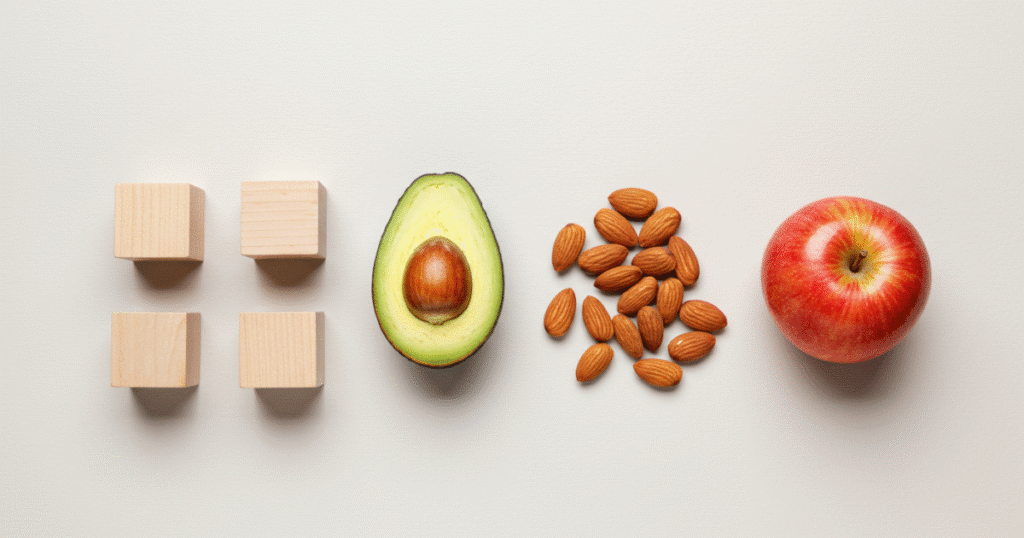The internet is saturated with advice on what to eat. From keto to paleo, intermittent fasting to veganism, the sheer volume of conflicting information can feel overwhelming. The problem with most of these “solutions” is that they are presented as rigid, one-size-fits-all prescriptions. They ignore the most important variable in the equation: you. This article will show you how to build a healthy diet by abandoning the rulebook and embracing a more effective, sustainable framework: The Pillar Methodology.
At Pillar, we don’t believe in diet dogma. We operate on a simple but powerful philosophy: your body is a laboratory, not a battlefield. The Nourish pillar of our methodology is not about restriction or guilt; it’s about running a series of intelligent experiments to discover what truly works for your unique biology, preferences, and lifestyle.
Your Body is a Laboratory, Not a Battlefield
The first step to building a diet you can stick to is to reframe your entire approach. Instead of seeing food as a source of stress and anxiety, view it as the raw material for your personal experiment. Each meal is an opportunity to gather data on what makes you feel energized, strong, and satisfied. This mindset shift is the foundation of sustainable nutrition. For a deeper dive into this philosophy, you can read our guide on how to actually improve your diet and nutrition (without the guilt).
A core component of this experimental approach is our Protocol for Food Preferences. If a “healthy” food is one you despise, forcing yourself to eat it is an unsustainable strategy. The experiment is doomed from the start. The protocol is simple: substitute any recommended food with one you genuinely enjoy that serves the same nutritional purpose. If you dislike broccoli, try green beans or asparagus. If salmon isn’t for you, opt for chicken breast or lean beef. The goal is to ensure the integrity of your experiment (getting the right nutrients) without sacrificing the pleasure and consistency required for long-term success.
The Power of Protein: Your Ally in Satiety and Strength
One of the most impactful variables you can test in your nutritional experiments is protein intake. Scientific evidence consistently shows that higher protein diets are highly effective for improving body composition and managing hunger. A comprehensive review of clinical trials found that consuming more protein than the standard recommendation not only supports weight loss but also enhances body composition by reducing fat mass while preserving lean muscle (1).
This happens for two key reasons. First, protein has a powerful effect on satiety—the feeling of fullness and satisfaction after a meal. It influences gut hormones that signal to your brain that you’ve had enough to eat, which can naturally lead to reduced calorie intake without conscious restriction. Second, adequate protein intake helps preserve fat-free mass (your muscles) during a period of weight loss, which is crucial for maintaining a healthy metabolism. By prioritizing a lean protein source in every meal, you are setting your experiment up for success by controlling hunger and protecting your hard-earned muscle.
The Science of Sticking With It: Why Adherence is Everything
Ultimately, the “best” diet is the one you can follow consistently. Research has shown that a higher level of adherence, regardless of the specific diet type, is the most critical factor for long-term weight management success (2). Whether you choose a low-carb, low-fat, or Mediterranean approach, your ability to stick with it over the long haul is what will determine your results.
This is why the “Body as a Laboratory” approach is so powerful. It builds a system that is inherently adaptable. When you encounter a challenge—a social event, a busy week, or a craving—you don’t see it as a failure. You see it as a new variable in your experiment. You can apply Pillar’s Protocol for Intentional Deviations, make a conscious choice, gather the data on how it affects you, and adjust your next steps accordingly. This removes the guilt-and-failure cycle that plagues most diets and replaces it with a process of continuous learning and refinement. This is how you build a healthy diet that doesn’t just work for a week or a month, but for a lifetime.
